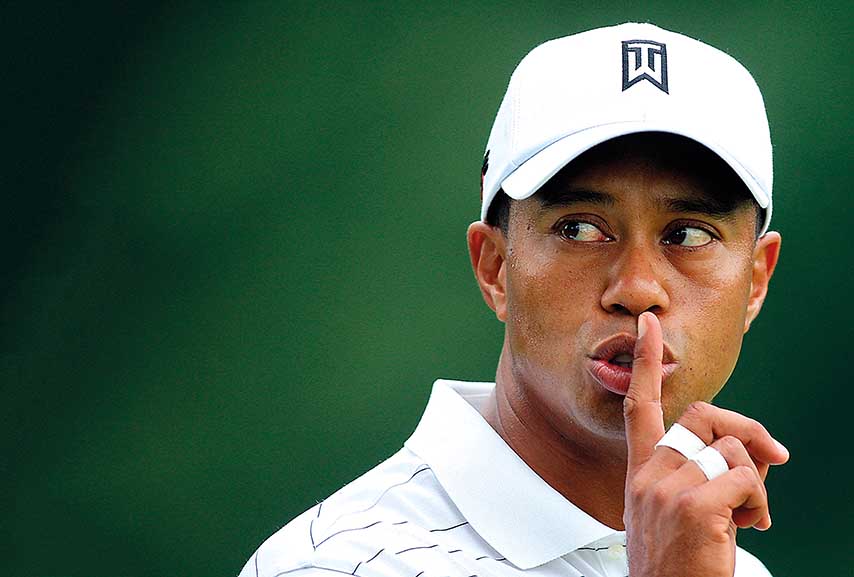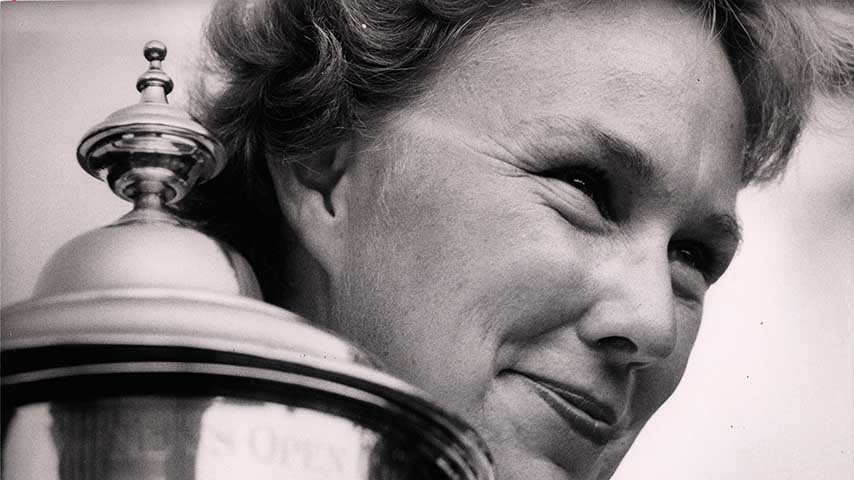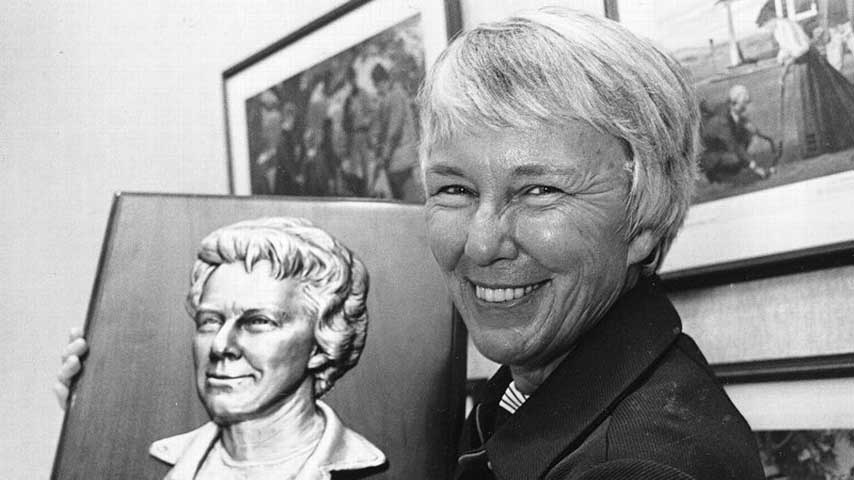If there is any one player who has revolutionised golf over the past 25 years, that person is unquestionably Tiger Woods. Not only for his 14 major championships but also for the spectacular perfection of his game…
Also popularly known as “The Extraterrestrial”, he has won more tournaments than Jack Nicklaus, although the latter – at least so far – has maintained a firm hold on the record for Grand Slam victories (18).
In the women’s game, second in the majors ranking (behind Patty Berg) is Mickey Wright, a sublimely talented golfer who decided to retire from competition when she was still only 35 after having won no fewer than 13 Grand Slam titles.
But starting with Tiger…
It is now an exceedingly long time ago, more than 26 years, when an extremely young Tiger leaped onto the international golfing stage for his US PGA Tour debut. It was 2 February 1992 and the lean lad was barely 16 years old when he teed up in the Nissan Open in Los Angeles and carded an opening 72 on the world’s premier tour. Still an amateur, he became the youngest player to compete on the PGA Tour. On the second day he shot a 75, not good enough to make the cut at the Riviera Country Club in a tournament eventually won by Davis Love III.
At the time he was a slender teenager weighing 63 kilograms, 20 fewer than his current weight, and he required special permission from the tournament director to be able to compete in the event.
“It was a moment that changed my life,” he recalled 25 years later, at a time when all was not particularly sweet in his career – albeit one that had previously produced 79 titles, including 14 majors, the second highest total behind Jack Nicklaus’s 18.
“It was a great learning process for me,” the former world number one admitted last year. “I realised I wasn’t all that good, and I realised that I had a long path ahead of me. At that level, I wasn’t competitive. I was at a junior level, not professional, and the other players were a lot better than me.”
That unforgettable experience, overseen by his father Earl Woods, was the prelude to what would culminate in the young Tiger becoming one of the greatest golfers in the history of the sport.

Dreaming of Emulating Jack
Who at the time would have thought to say to the pipsqueak looking at the poster on his bedroom wall that one day he would be as famous as the face peering out at him. The kid was Tiger Woods and the gentleman on the wall, Jack Nicklaus.
The young Eldrick (Tiger’s real name) gazed at his idol’s career achievements every night and dreamed of emulating him one day. The 18 Grand Slam titles won by the master became, over time, an obsession for the Californian. “It has always been my objective to surpass Jack’s record,” Woods has admitted on various occasions. And it did seem as though the goal was within reach… until one autumn day in 2009 when his life and game turned upside down.
It is not easy to make a comparison – or at least a more or less fair one – between Nicklaus and Woods in a sporting sense, as three and a half decades separate their main careers, and over that time golf has changed significantly in various aspects, including equipment (clubs and balls) and physical and mental preparation. However, the essence of competition – which in effect is simply a player’s talent – remains the same. In favour of Nicklaus it can be said that during his era he had to beat such extraordinary players as Gary Player, Arnold Palmer and Tom Watson, to name just a few (the former won nine majors and the other two eight each).
Analysing the respective ages of the two stars, Nicklaus won his first Grand Slam title when he was 22 (Tiger had won six by then: two at 20 years and four at 21) and his final major at 46. In total, he collected his 18 majors in a period of 24 years, while Woods won his 14 in 12 years. Taking these figures into account, Tiger has less than four years to equal or beat his childhood hero’s record. Obviously, it is also important to bear in mind that only one player in the last six decades has won five majors after turning 35 – and that’s Nicklaus.
Before turning professional, Tiger won the US Amateur title three times, while Nicklaus won two. Both were victorious in the NCAA Championship, and Woods triumphed in three US Junior Amateur tournaments.
Their respective records in the majors could have been even more impressive if they had been rewarded with a bit more luck in the final round, as both have tallied several runner-up finishes. Nicklaus leads the way, having finished second in 19 majors, while Tiger has been runner-up in a Grand Slam tournament on six occasions.
The Golden Bear, for example, succumbed to Arnold Palmer twice, and Lee Trevino and Tom Watson four times each. He also lost out to Seve Ballesteros by three strokes in the 1979 British Open. Tiger’s rivals were less illustrious (Cabrera, Beem, Yang…) than the legendary names Nicklaus lost out to in Grand Slam finales.
As for their overall wins on the US PGA Tour, Tiger has 79 to Nicklaus’s 72. The latter could easily have reached 100 PGA Tour wins with a bit more good fortune; he finished second 58 times and was third on another 38 occasions.
After analysing the figures, the question remains: who is the best golfer of all time? It is clear that, if Tiger had continued along the same path as that from 1997 to the calamitous interruption to his career in 2009, he would have possibly topped Jack’s majors tally as well.

Global Shock… Professional and Private
Much, of course, has happened since 1997, when the earnest young man from Cypress surprised the world by winning the US Masters at Augusta National Golf Club in such emphatic style: at 21, he became the youngest winner of a major, scored the biggest margin of victory (12 shots) and was the lowest under par (-18).
After that effort, he went on to produce a golfing recital that had never been seen before, demonstrating such superiority on the course that he justifiably earned the nickname “The Extraterrestrial”. His game was not, it has to be said, of this world. He broke all manner of records, both statistics related to his game and money earned, stringing together one win after another – including six in one season – and dominating the majors. Everything he touched turned to gold. For a decade no-one was able come anywhere near his achievements, and his reign at the top of the world rankings became an indefinite one.
Everything seemed perfect and, even during the year when the scandal broke (2009), his winnings on the PGA Tour could have been another record if he had started the season earlier or played in one or two more events – he eventually finished $360,000 short of his previous best season, 2007, when he won $10,867,052. His winnings in 2009 took his career total, since turning pro in 1996, to $92,862,539 – just a proportion of what he was believed to have earned from endorsements and other income sources. In total, an estimated $1,000 million, making him even then the highest-earning sportsman in history – not to mention, probably, the person who has paid the highest divorce settlement (believed to have been around $300 million).

After returning to competition in 2010, Tiger suffered the worst run of his career, ending the year without a win. It was a year of changes for Woods, who re-appeared for the first time at the Masters in April, after news of his infidelity had made the headlines. His divorce from former model Erin Nordegren was confirmed in August and his results on the course failed to match his previous exploits. He did, however, manage to hold on to the number one world ranking as his main rival, Phil Mickelson, was unable to take advantage.
Tiger’s 42nd place on the 2010 PGA Tour, with $1,294,765 in prizemoney, was the worst final position of his career (at the time). Only in his debut season (1996) had he won less ($790,594) but he still finished 24th. His 2010 season was in stark contrast to 2009, when he finished first, won well over $10 million and collected seven titles (including the Presidents Cup as a member of the US team) and had second places in the US PGA Championship and The Tour Championship. He played 12 events in 2010, only finishing in the top-10 twice: fourth in both the US Masters and the US Open. He failed to finish two tournaments, missing the cut in one and in the other withdrawing on the final day.
In 2011 things were little better although in December that year he finally had cause for some joy. He lost his number one world ranking, had only one top-10 finish, failed to make the cut in one event, abandoned another and finished the year in 132nd position, with winnings of $660,000 (the tournament he won in December, the Chevron World Challenge, did not count for official prizemoney). It had been two years without a Grand Slam victory; his 14th, and last so far, had been the 2008 US Open.
In 2012, he regained his touch and recorded three wins, and the following year he was victorious five times (his most recent PGA Tour win was in August 2013, the WGC-Bridgestone Invitational) in spite of suffering from constant back problems, which had been affecting him for more than five years. In April 2014, he underwent the first of four surgical operations on his back, with the final one last year. He subsequently only competed in a dozen events in two years; in 2016 he did not tee up in any tournaments; and the following year only two.
This season, until the US Open (where he failed to make the cut), he had competed in 11 tournaments. He also missed the cut in one other, and his best results were second in March in the Valspar Championship, fifth and ninth.
The problems with his back led to the incident a year ago when he was arrested in Palm Beach (Florida) and charged with driving under the influence of drugs, five prescription products as revealed in a subsequent analysis. A mugshot was released of Tiger that starkly revealed his declining state. He later explained that this was not due to any intentional behaviour on his part but rather the result of medication he had been taking following his operation just a few weeks before, and the combination of medicines had provoked an unexpected reaction.

Not Content with Second Place…
The implosion of his personal life led to the collapse of his sporting career and, at least for the moment, he has been unable to rediscover his form of old. In any event, Tiger hasn’t thrown in the towel by any means: he continues to insist he wants to continue playing at the top level and is doing so to win. He is not willing to settle for second place and his main goal is to break Nicklaus’s record of 18 Grand Slam titles.
“It wasn’t from one night to the next morning that Jack won 18, so I’ll take my time. No-one in the history of the game has been better than Jack at putting himself in a winning position in majors. If you have 37 top-two finishes, like he has, you’ve done well.”
So what does Nicklaus himself have to say about the possibility of Tiger breaking his record? A few years ago, he observed, “I still think he’s going to break my record. I’m surprised he hasn’t recovered yet. He has a great work ethic and great determination to achieve what he puts his mind to.”

Mickey Wright: 13 victories in a single season!
There have been few golfers like Mickey Wright in the history of golf: a sporting phenomenon who won 13 times in a single season, and totalled more than 80 titles in her short career – having retired at 35.
Ben Hogan described her swing as the best he ever saw. So did Byron Nelson. For 14 years, she dominated women’s golf, winning 82 tournaments and carrying the Ladies Professional Golf Association Tour on her shoulders.
Mickey Wright was not burdened by potential – potential, in her words, was but a hope to be fulfilled. What made her retire, at age 34, was the burden of being Mickey Wright.
“The pressure was so great,” remembers Kathy Whitworth. “Sponsors threatened to cancel their tournaments if she didn’t play. And, knowing that if they cancelled the rest of us wouldn’t be able to play, Mickey would always play.”
The buzzword today is burnout. Wright played 33 tournaments in 1962, another 30 in 1963 and 27 in 1964. She won 10, 13 and 11 tournaments in those years and, as the LPGA’s president, it was Wright’s duty to promote the tour by doing every conceivable interview and attending every press conference that was scheduled.
That just wasn’t her. “I’m not real good as far as wanting to be in front of people, glorying in it and loving it,” Wright has said. “I think you have to love that to make that kind of pressure tolerable. It finally got to where it wasn’t tolerable to me.”

It had also reached the point where there wasn’t much left to accomplish. Wright won the US Women’s Open and the LPGA Championship four times each. She won the Vare Trophy five times, was the leading money winner four times, twice had winning streaks of four straight tournaments and held LPGA records for lowest round (62), lowest nine-hole score (30) and most birdies in a round (nine).
At the peak of her career, Herbert Warren Wind described her as “a tall, good-looking girl who struck the ball with the same decisive hand action that the best men players use; she fused her hitting action smoothly with the rest of her swing, which was like Hogan’s in that all the un-functional moves had been pared away, and like Jones’ in that its cohesive timing disguised the effort that went into it.”
Citing an adverse reaction to sunlight, an aversion to flying and foot problems, Wright cut back her schedule dramatically after the 1969 season to lead a quieter, simpler life in Port St. Lucie, Florida. Although she came back in 1973 to win the Dinah Shore, Wright knew that she had fulfilled her potential and elected to bow out on her terms. “I maintain that she could have won 100 tournaments if she hadn’t quit early,” says Whitworth, who won 88.
Born 14 February 1935 in San Diego, Wright began to hit balls with her father at the age of four. At 11 she received her first lesson at La Jolla CC, and within a year had broken 100. Three years later, she posted a round of 70 in a local tournament and, in 1952, Wright won the USGA Girls’ Junior Championship for her first national title.
For a year, Wright studied psychology at Stanford, but she left school after her freshman year to play a full-time schedule. In the summer of 1954, she lost in the final of the US Women’s Amateur, finished fourth in the US Women’s Open to Babe Zaharias and won the World Amateur staged by golf promoter George S. May. Those three tournaments convinced Wright to leave school and turn professional.
“Golf has brought me more rewards, financially and personally, than I ever could have earned had I become the psychology teacher I set out to be,” Wright said later in life. “I feel as if I’ve earned my own version of a master’s degree in psychology in study and experience, trial and error, on golf courses throughout the United States. For psychology...is as integral a part of good golf as an efficient swing.”




